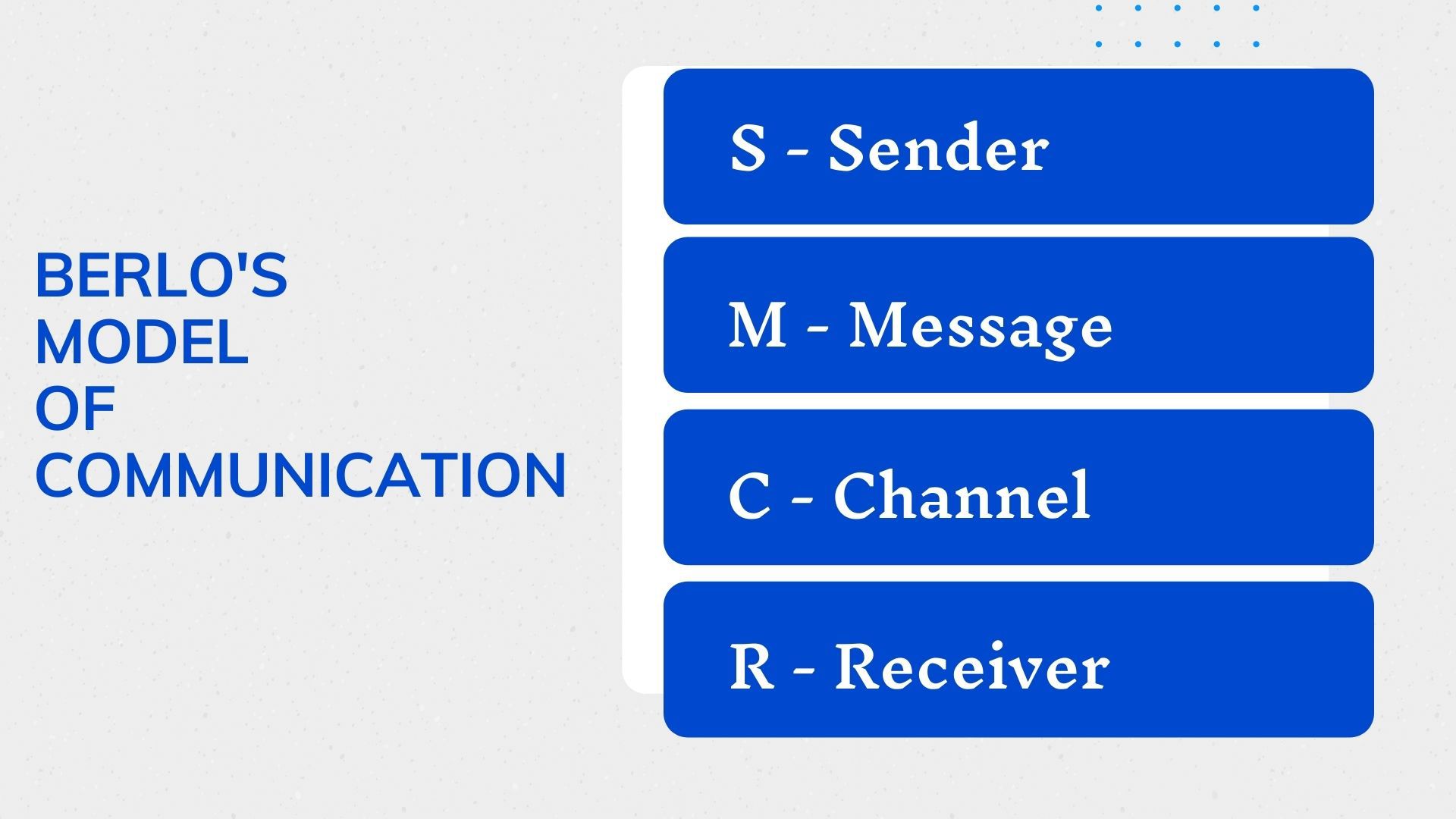David Berlo set Berlos model of communication in the 60s. This model is also known as the SMCR model of communication. Unlike the Aristotle model of communication, which assigns speakers as an essential part of the model, this model states that the emotional aspect of the message is an integral part of communication.
In this model, SMCR stands for Source, Message, Channel, and Receiver.
Table of Contents
SCMR Model of Communication

1. S – Sender
The person or the source from whom the message begins is the sender of the message. The sender sends the message to the receiver who receives it and decodes it. The sender is a common element in most of the communication models. The sender composes the message to be sent to the receiver.
Have you considered the role of social systems in effective communication?
In a recent study published by the Pew Research Center, it was found that 58% of people believe that misunderstandings in communication stem from cultural differences, highlighting the importance of understanding social systems for effective communication. This supports Berlo’s concept that varying social systems can profoundly affect both the delivery and reception of messages, making it crucial for communicators to be culturally sensitive. This understanding can improve international business communications and personal interactions.
For industry professionals looking to enhance their communication strategies, it’s beneficial to use tools such as Grammarly to improve written communication or Duolingo for language learning, which can bridge language barriers and foster better understanding in multi-cultural contexts. These tools are designed to refine the details that Berlo identifies as critical in the communication process, ensuring messages are clear and contextually appropriate.
Factors related to or affecting the sender:
1.1 Communication
The sender’s or receiver’s communication skills are the ones that affect the communication process. The quality of the message depends on the quality of the communication skills of the sender.
You can’t get the right message if the message is not composed correctly. Also, if the receiver does not have good communication skills, then he will not be able to comprehend the message since communication is not only about talking but also about listening and understanding.
Also, other skills like listening, writing, reading, etc. depends on communication skills, and if they are not good enough, then the process of communication will not be effective.
1.2 Attitude
The message of the communication is dependent on the attitude of the sender and receiver. The entire tone of the message depends on the attitude of the sender as well as the receiver.
Their attitude towards the message, the receiver, and even towards self, constructs the meaning of the message. A message sent with a positive attitude will create a different meaning, while a message sent with a negative attitude will have entirely different effects.
1.3 Knowledge
If the sender and receiver are familiar with the subject of the message then it will have a different effect on the message but if either of them is not aware of the topic and do not have enough knowledge, then the message may not be conveyed effectively and will be subject to error.
1.4 Social systems
There are many social systems between the sender and the receiver, which affects the message. There may be values, laws, etc. which may affect the sender.
For example, if a sender is German and the receiver is Norwegian, then definitely the message will not be conveyed. Not only because of the language barrier but also because of different social systems.
1.5 Culture
Different cultures will have different messages. Even one message can be interpreted in different ways by different cultures. Something which is not offensive in one culture may be offensive in another culture, and it is essential to know such subtleties before entering into multi-cultural communication.
2. M – Message
The actual substance or the context of communication is called a message. It is something that is transferred from the sender to the receiver and can be in any form like a text, video, or other media.
Factors related to or affecting message
2.1 Structure of the message
The way a message is composed or structured affects the effectiveness of the message. This will affect both the sender and the receiver equally. A message which is not structured correctly will be not only incomprehensible but also be open to interpretations.
2.2 Content
The matter of the message is called the content. The content is present in every message, be it audio, video, text, or combination of these elements. The receiver will appreciate excellent and engaging content.
2.3 Treatment
How the message is relayed across to the receiver is called as treatment. Treatment affects the feedback of the receiver. One should realize the importance of the communication message and also is expected to know how to handle it.
2.4 Elements of the message
Elements of the message which are non-verbal elements like tone, expressions, signs or gestures, etc. A message could have multiple elements, like hand movements, gestures, expressions, etc.
2.5 Code
How the message is sent is called the code of the message. For, e.g., Audio, text, video, sound, etc. consider it as a password. Enter the wrong code, and the account won’t open. Similarly, use the wrong code, and it will disrupt the message.
3. C – Channel
Medium, which is used to send the message, is known as a channel. There are multiple channels in communication, depending on the message like the internet, radio, television, print, etc.
Berlo’s channels refer to the five human senses which can interpret the message encounter. The channel is affected or somewhat dependent on these five senses when it comes to the effectiveness of the message.
3.1 Hearing
The message that we receive through hearing.
3.2 Seeing
The messages which are received by seeing, be it verbal or non-verbal
3.3 Touching
While verbal communication occurs with a proper medium like text or picture, non-verbal communication primarily takes by a handshake, or a frown or happy look.
3.4 Smelling
A lot of information such as fragrance, the freshness of the product can be known by smelling.
3.5 Tasting
Useful information such as the quality or taste of the product can be sent as a message via taste.
4. R – Receiver
The receiver is at the other end of the communication process at the exact opposite end of the sender. The receiver is the one who decodes and comprehends the message of the sender. As per Berlo’s model of communication, all the factors which are explained above, along with the thinking pattern, should be in sync with the sender. This will make the communication process much more effective.
It is ensured that the sender and receiver should be similar since if they are not, then the message will not have the same effect on the receiver. Imagine an Indian man listening to an Arabic ad on the radio.
The message will fail to instigate action from the receiver, which would defeat the whole purpose of communication. Factors like culture, social systems, etc. of the sender should be similar to the receiver.
Here is a video by Marketing91 on the Berlos Model of Communication.
Advantages
- The model is straightforward as compared to modern communication models. All the primary factors which are a part of any communication process are taken into consideration along with the factors which affect them.
- This model is still being used in some cases of purer forms of communication, like person-to-person communication.
- This model forms a basis for higher communication models.
Limitations
- The primary source of interruption for the failure of any message is noise, and this model does not consider noise or any other limitations in the process of communication. Most of the messages are lost today because of noise, and hence marketers and advertisers should consider this while communicating to the customers.
- Unlike a two way model of communication, there is a complete absence of feedback. Feedback is one of the crucial aspects of every communication process, and it is essential especially in modern-day communications and competitive markets.
Conclusion
Thus, Berlos model of communication is a crucial concept to understand various elements of the communication model along with the factors which affect them. It can be used for designing and understanding basic communication processes.
Liked this post? Check out the complete series on Communication
